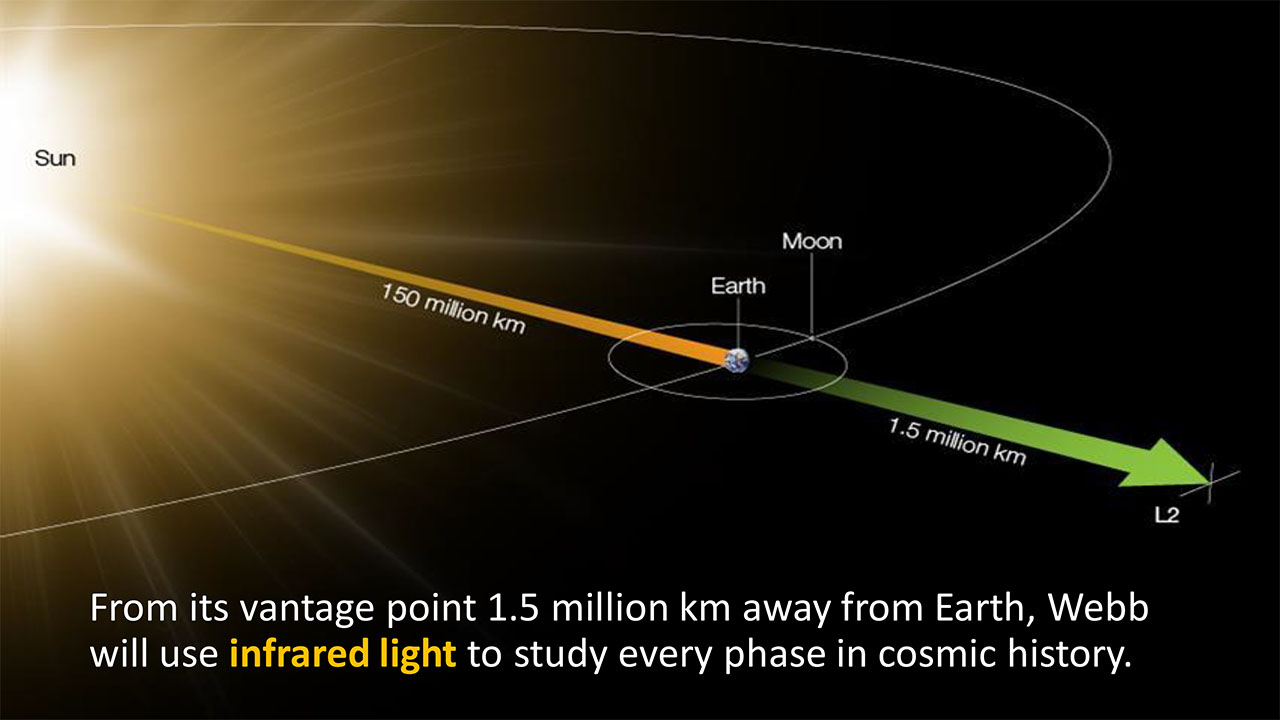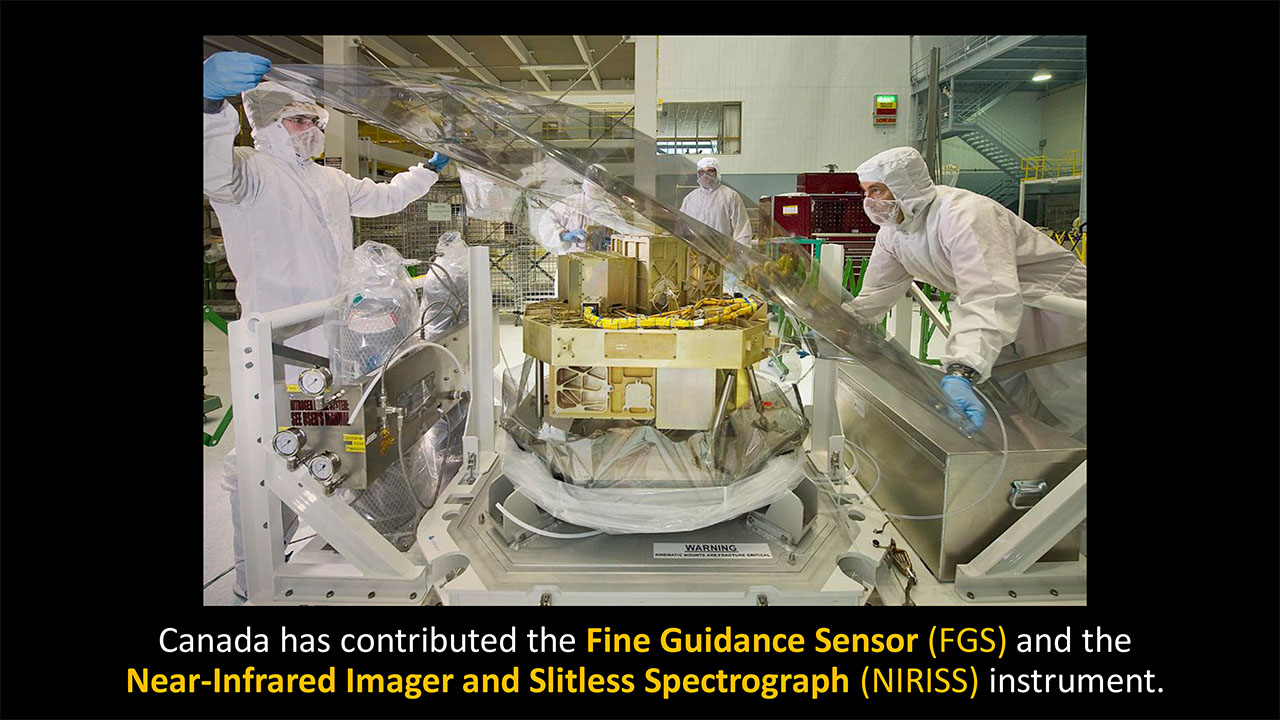Speakers' kit - James Webb Space Telescope
Resources that space ambassadors and experts can use to present the James Webb Space Telescope to audiences across Canada.
Presentation
Multimedia
- NIRISS, Canada's exoplanet specialist on the James Webb Space Telescope - Infographic
- NIRISS, Canada's cosmic time machine on the James Webb Space Telescope - Infographic
- Canada's stellar navigator on the James Webb Space Telescope - Infographic
- Background image for virtual presentations
- Image gallery
- Video gallery and animations
Frequently asked questions
What is the James Webb Space Telescope?
The James Webb Space Telescope is the most important space observatory of the next decade, serving astronomers from all over the world. It is an international collaboration between NASA, the European Space Agency and the Canadian Space Agency (CSA).
Webb is the successor to the Hubble Space Telescope, but not its replacement. The two missions have a planned overlap and will work together on new discoveries. Webb will build on Hubble's impressive legacy by helping humanity peer even deeper into the universe.
What is Canada's contribution to the telescope?
The CSA is contributing two important elements, built by Honeywell, to the Webb Telescope:
- the Fine Guidance Sensor (FGS), which will allow the telescope to point at and focus on objects of interest
- the Near-Infrared Imager and Slitless Spectrograph (NIRISS), a scientific instrument that will help study many astronomical objects, from exoplanets to distant galaxies
In exchange, Canada will receive a guaranteed share of Webb's observation time, making Canadian scientists some of the first to study data collected by the most advanced space telescope ever built.
When will Webb be launched? Where will it go?
The telescope is scheduled to launch on , aboard an Ariane 5 rocket from Europe's spaceport in Kourou, French Guiana. It will take Webb about a month to travel to its final destination, 1.5 million kilometres from Earth.
How long will Webb's mission last?
After its six-month post-launch commissioning period, Webb will operate for a minimum of five years, to approximately 10 years. Webb will carry fuel for a 10-year lifetime. The length of the mission will ultimately be determined by the amount of fuel used to maintain Webb's orbit, and by the proper functioning of the spacecraft and its instruments.
What will Webb discover?
Webb's powerful look into the universe will help scientists discover alien worlds like exoplanets, learn more about the life cycles of stars, paint a fascinating picture of the early universe, and see galaxies as they evolve through time.








